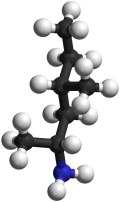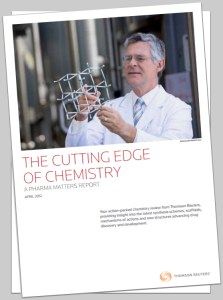 My latest clutch of science news is now available on SpectroscopyNOW.com including the first feedback from NASA’s Curiosity Rover on Mars, MRI’s magnetic memory effects, how the all-carbon buckyball traps water, a new way to detect even the vaguest sniff off the explosive TNT, a clearer understanding of antibiotic resistance in tuberculosis and, finally, nanoscopic infrared spectroscopy.
My latest clutch of science news is now available on SpectroscopyNOW.com including the first feedback from NASA’s Curiosity Rover on Mars, MRI’s magnetic memory effects, how the all-carbon buckyball traps water, a new way to detect even the vaguest sniff off the explosive TNT, a clearer understanding of antibiotic resistance in tuberculosis and, finally, nanoscopic infrared spectroscopy.
Analyse Mars – The ChemCam instrument aboard NASA’s Curiosity rover recorded its first spectra on Mars in mid-August, giving the systems a little target practice but also demonstrating that the device is working as it should by providing a sneak preview of rocky spectra.
On the 19th August 2012, a couple of weeks after NASA’s Mars rover Curiosity landed in the Red Planet’s Gale Crater, it fired its laser for the first time at a fist-size rock known as “Coronation.” The Chemistry and Camera instrument, or ChemCam, flashed the rock with thirty pulses of laser light over a 10-second time period with each pulse blasting the Martian rock with a megawatt of power for just five nanoseconds.
via ChemCam’s mega blast: Martian rock succumbs – Ezine – spectroscopyNOW.com.
Magnetic Memory Effect – A small-scale study published in the journal Occupational and Environmental Medicine, published by the British Medical Journal group, looked at the effects on 31 healthy volunteers of exposure to a 7 Tesla MRI magnetic field. The researchers allowed the volunteers to make standard head movements while they exposed them to one of three electromagnetic field strengths from what is described as a heavy-duty MRI scanner. For such a machine the magnetic field is present even when the instrument is not in use.
via Magnetic fields: Memory effects – Ezine – spectroscopyNOW.com.
Molecular cages – Cryogenic NMR spectroscopy and other techniques have been used to investigate how small molecules, including water, are trapped by the all-carbon cages known as fullerenes. The work might open up the possibility of using such caged systems as alternative contrast agents for magnetic resonance imaging or as innovative components of a molecular transistor.
via Move like caged hydrogen: Buckyball traps – Ezine – spectroscopyNOW.com.
Explosive reaction – Researchers in India have developed a shapely approach to nanoparticle enhancement that allows them to detect TNT at sub-zeptomole concentrations of TNT.
Thalappil Pradeep, Ammu Mathew and P. R. Sajanlal of the Indian Institute of Technology Madras have used a clever combination of micro- and nano-structures as sensors to detect tiny quantities of the explosive material TNT, trinitrotoluene. Their gold mesoflowers, are flower-shaped gold particles about 4 micrometres in diameter, which act as supports for clusters that contain precisely fifteen silver atoms and are embedded in the protein bovine serum albumin. Irradiation at an appropriate wavelength leads to red luminescence of the silver clusters and the gold intensifies this process. The distinctive shape of the mesoflowers means that they are readily identifiable under an optical microscope by visual inspection. The shape might also be exploited in image recognition of micrographs, something that is far more difficult if the particles being observed are spherical.
via Sensitive flower: Explosive glow – Ezine – spectroscopyNOW.com.
Drug resistance – In a previous issue, we discussed early work on Escherichia coli as a proof of principle for understanding how bacterial resistance to antibiotics can emerge. Now, Edward Yu’s team at Iowa State University have taken another step forward in our understanding of this pressing issue by using crystallography to reveal the structure of a protein regulator that controls the expression of the multidrug efflux pump in Mycobacterium tuberculosis.
via TB or not TB: Efflux X-rayed – Ezine – spectroscopyNOW.com.
Nanospectroscopy – An optical technique that combines Fourier transform infrared (FTIR) spectroscopy and scattering-type scanning near-field optical microscopy (s-SNOM) now allows nanoscopic quantities of materials to be identified chemically and mapped. The technique of nano-FTIR developed has been developed by scientists from the nanoscience research centre NanoGUNE in San Sebastian, Spain, the University of Munich, LMU, Germany and Neaspec GmbH in Martinsried, Germany.
via You say you want resolution: Nano-FTIR – Ezine – spectroscopyNOW.com.
 Back in April 2012, the US Food & Drug Administration ordered supplement manufacturers to stop selling bodybuilding and weight-loss products containing DMAA, 1,3-dimethylamylamine, methylhexanamine, also known as geranium extract. Ingestion of the compound is thought to carry a risk of cardiac arrest or stroke as well having been linked to other problems such as harm to the nervous system and psychiatric disorders.
Back in April 2012, the US Food & Drug Administration ordered supplement manufacturers to stop selling bodybuilding and weight-loss products containing DMAA, 1,3-dimethylamylamine, methylhexanamine, also known as geranium extract. Ingestion of the compound is thought to carry a risk of cardiac arrest or stroke as well having been linked to other problems such as harm to the nervous system and psychiatric disorders. My latest clutch of science news is now available on SpectroscopyNOW.com including the first feedback from NASA’s Curiosity Rover on Mars, MRI’s magnetic memory effects, how the all-carbon buckyball traps water, a new way to detect even the vaguest sniff off the explosive TNT, a clearer understanding of antibiotic resistance in tuberculosis and, finally, nanoscopic infrared spectroscopy.
My latest clutch of science news is now available on SpectroscopyNOW.com including the first feedback from NASA’s Curiosity Rover on Mars, MRI’s magnetic memory effects, how the all-carbon buckyball traps water, a new way to detect even the vaguest sniff off the explosive TNT, a clearer understanding of antibiotic resistance in tuberculosis and, finally, nanoscopic infrared spectroscopy. The latest issue of my Cutting Edge of Chemistry report for TR Pharma Matters is now available.
The latest issue of my Cutting Edge of Chemistry report for TR Pharma Matters is now available. A new dual laser approach to analysing chemicals shouldn’t require the sample to be prepped and placed in the spectrometer. The surface of a suspect package at an airport or a contaminated material in a medical or environmental setting could be “scanned” via a standoff approach using the new technique, according to research I discuss in the latest issue of SpectroscopyNOW.
A new dual laser approach to analysing chemicals shouldn’t require the sample to be prepped and placed in the spectrometer. The surface of a suspect package at an airport or a contaminated material in a medical or environmental setting could be “scanned” via a standoff approach using the new technique, according to research I discuss in the latest issue of SpectroscopyNOW.